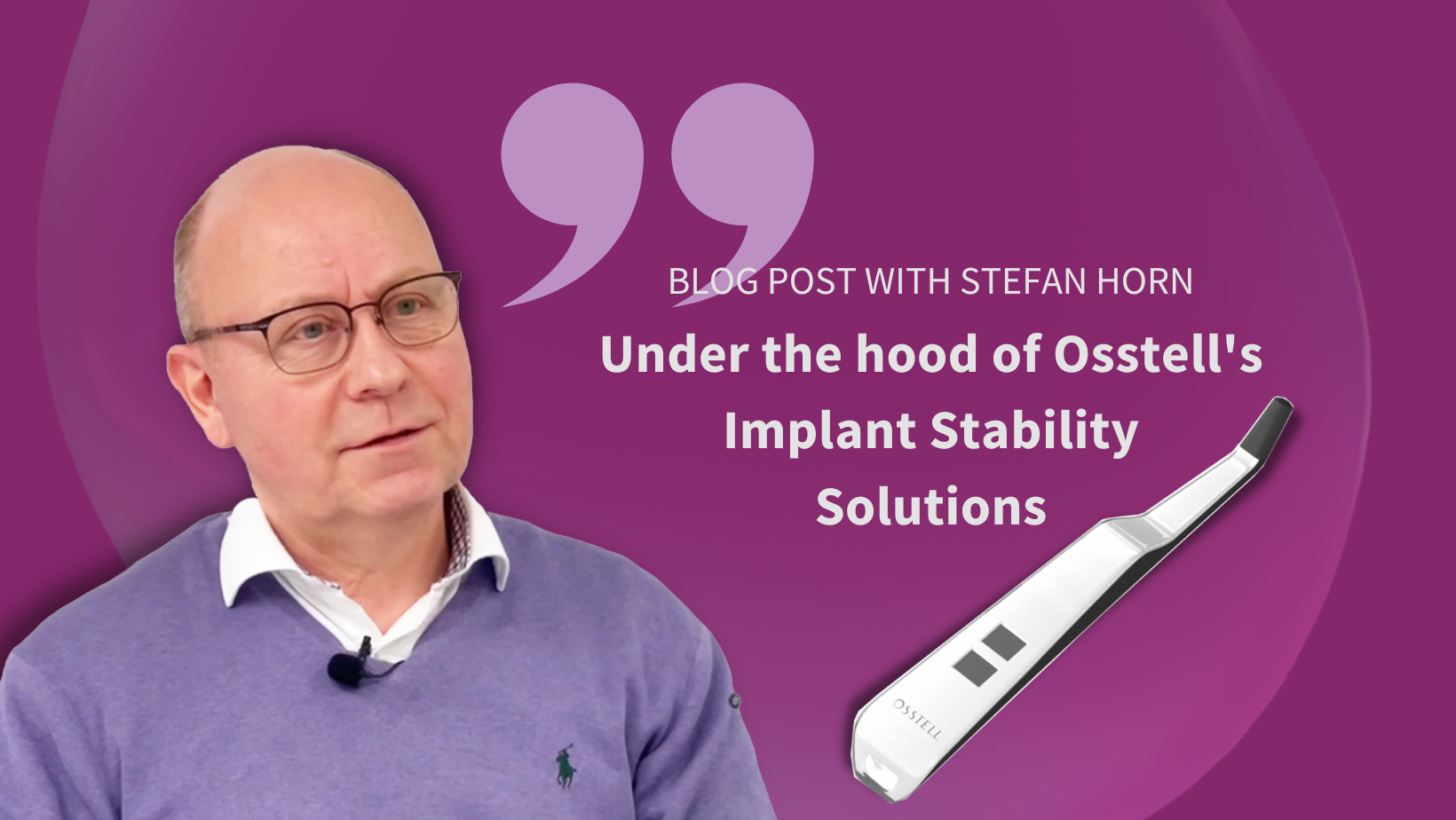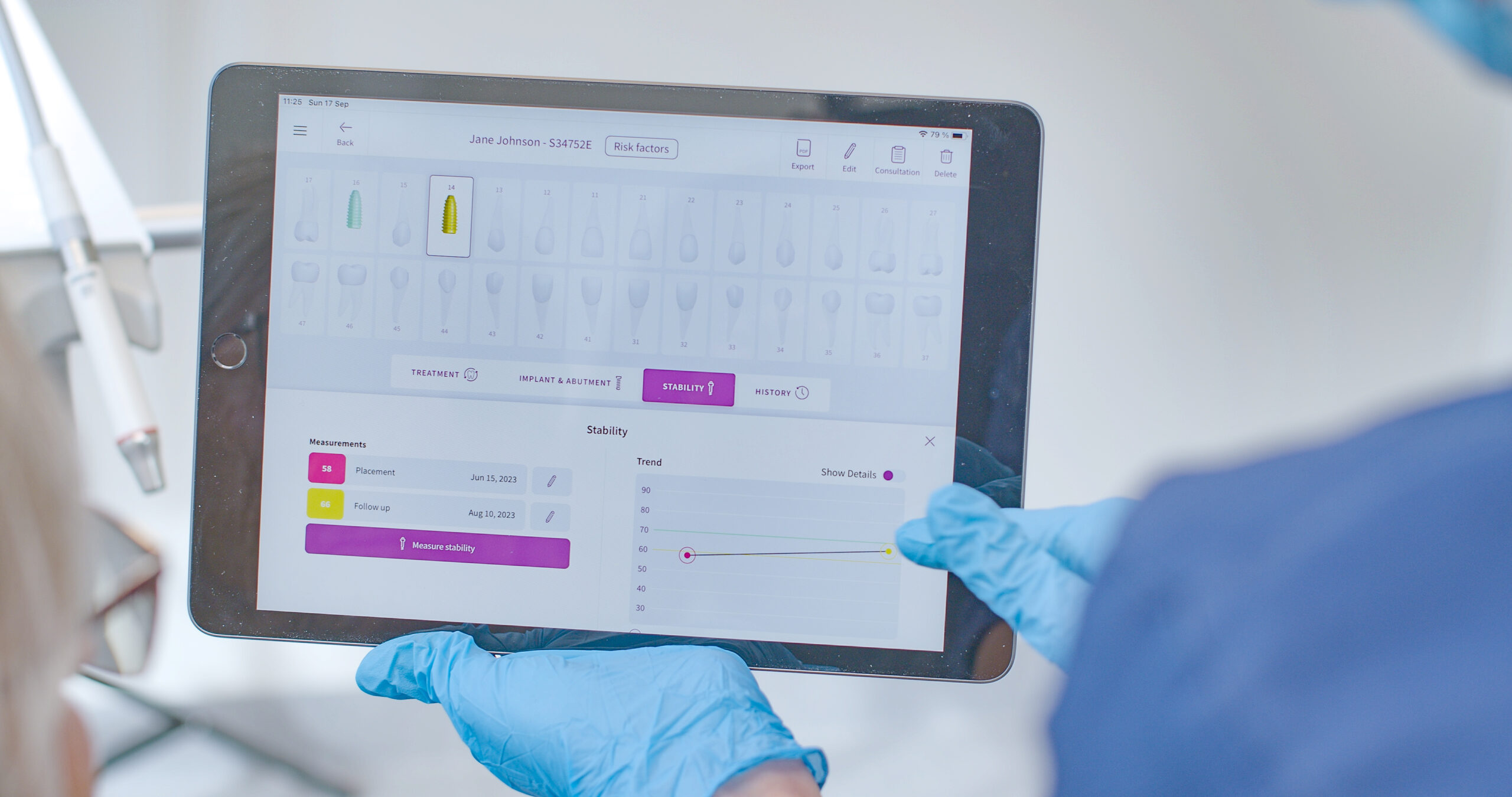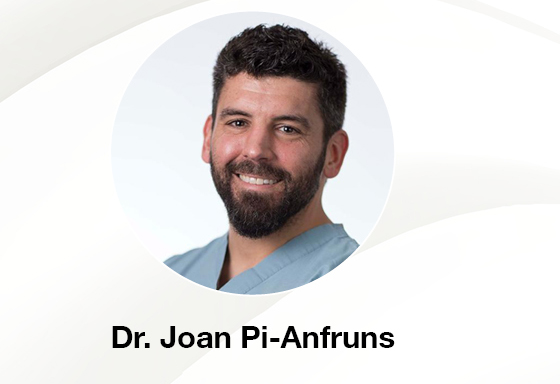
Welcome to today’s exploration of dental implant stability. In our conversation with Stefan Horn, VP for product solutions at Osstell, we delve into the innovative technology that is used by thousands of clinicians around the world. Stefan, thanks for joining. Could you start by informing our readers about Osstell and its mission?
Stefan Horn (VP Product Solutions): Thank you for having me! Osstell is the global leader in providing innovative and non-invasive technology to measure dental implant stability.
Our mission at Osstell is to help clinicians provide each patient with optimal time to teeth.
Optimal in the sense not to proceed with a final restoration either too fast, or waiting unnecessary long, all under the patient’s conditions and needs.
There are a lot of decisions to be taken during an implant treatment, and this is where Osstell implant stability solutions can assist in each case, considering the unique aspects of every patient. After all, we are dealing with a biological process that depends on the patient’s prerequisites.
That’s an important mission. Can you explain why implant stability is crucial in dental implant treatments?
Absolutely. Implant stability, which correlates to implant mobility, is a critical factor that impacts the osseointegration process and long-term functionality of dental implants.
Measuring implant stability at the time of placement, where only mechanical stability is present, and monitoring stability development during the healing phase confirm the transition to biological stability, signifying an integrated implant.
Integrated implants can more predictably support the prosthetic structure effectively and withstand the natural forces of daily use, providing patients with a reliable and long-lasting solution for their missing teeth.
How does Osstell measure implant stability?
Osstell’s implant stability technology is based on Resonance Frequency Analysis (RFA).
The implant stability measurement is objective and non-destructive, meaning, it does not impact the osseointegration. There is no discomfort for the patient during the measurement and it takes less than a minute to measure the implant stability.
Our technology has been available now for almost 25 years and has a strong evidence-base with more than 1500 published studies.
Can you explain more about RFA?
As I mentioned, RFA stands for Resonance Frequency Analysis.
Just like a tuning fork resonates with different pitches based on its length, RFA involves assessing the resonance of an Osstell SmartPeg, which is a small aluminum pin with a magnet on top. The SmartPeg is attached to the implant prosthetic connection.
To further illustrate the technology, consider a metal bar placed halfway into a bucket of concrete that is just starting to harden. Initially, the bar has low stability, producing a low pitch when struck at the top with a hammer – bong! However, as the concrete further hardens around the bar, the pitch of the sound produced by the metal bar gradually increases – ding!
In the way we have applied the RFA technology, we listen to the response of the SmartPeg, which reflects the mobility of the implant. This process allows monitoring the transition from mechanical stability at placement, to the desired biological stability during the healing phase.
Of course, in implant applications, we don’t physically hit the SmartPeg to make it to vibrate, instead we utilize a non-invasive measurement technique using magnetic pulses to excite the SmartPeg, therefore the magnet on top of the SmartPeg.
RFA normally gives you a frequency value in Hertz. To make it easier to interpret the measured value, Osstell introduced the ISQ unit.
What does ISQ stand for, and could you provide an explanation of its significance in the context of dental implant stability?
ISQ stands for Implant Stability Quotient and is a numerical scale ranging from 1 to 99. The higher ISQ value, the higher implant stability.

To make the ISQ scale clinically relevant and useful, we have used the results from the numerous published papers based on our SmartPeg technology, and extracted how the different ISQ values are clinically used for different indications and decisions.
This has resulted in a Osstell ISQ scale that is color coded like traffic lights (red, yellow, green),and can be used as decision guidance for different implant loading protocols.
It is important to note, competitors may share similar technology and terminology, but measures responses from pegs made of different means interpretations of measured stability values are not equivalent. For example what is considered low, medium, and high stability, varies, and can cause confusion.
Are there any competing techniques in the market today?
I would say that they are either using torque and/or using extensive healing times, meaning not using ISQ measurements. Of course, this also represents an opportunity for us, as we are convinced of the value of our ISQ to accurately determine whether an implant has achieved biological stability.
Torque levels, as per the implant manufacturer’s guidelines, play an important role in determining stability at implant insertion and the possibility to attach prosthetic components. However, a torque value is a static measurement only recommended to be used during implant insertion and thereby not useful to track the osseointegration process. Furthermore, torque is a measurement of rotational friction, while RFA provides the stability more focused on lateral stability, which is more closely correlated with the forces an implant will be exposed to during normal chewing.
The usage of torque should only be used at implant installation. Using it during the healing phase poses a risk of jeopardizing the ongoing bone remodeling, and thereby the achieved biological stability.
Tapping on the implant to assess stability is another method, but it is highly subjective and demands substantial experience to interpret the sound accurately.
Another approach involves waiting for an extended period for the integration, but this can lead to excessive and unnecessary delays in the whole treatment process. It’s essential to note that once an implant is integrated, an extended healing period isn’t optimal. Ideally, when the implant is integrated, it should be loaded—not too early and not too late, but at the right time. This underlines the value of measuring implant stability to determine when it is time to proceed to final restoration.
In essence, Osstell’s RFA offers a more objective and relevant assessment of implant integration, considering predictability and optimal time to teeth, setting it apart from traditional methods that may be more subjective, delaying the treatment or pose potential risks the healing process.
Could you highlight some recent advancements or innovations at Osstell that our readers would find interesting?
We have continuously developed our ISQ devices, with the Osstell Beacon we are on the fifth generation of Osstell ISQ devices using the same RFA technology! Over the past 8 years, we have dedicated more attention to our online platform, OsstellConnect, that currently comes free of charge with our ISQ devices.
What is OsstellConnect?
In short, OsstellConnect is a cloud-based tool, designed to make regular tasks like documentation, collaboration, and communication easier for the dental team. It also contributes to a positive experience for each patient undergoing implant treatment.
We see the implant treatment as a collaborative journey involving the patient, clinician, and dental team. Our idea with OsstellConnect is to help make things more convenient during this journey.
For example, the measured ISQ values can be presented graphically in a digital way that is easy to understand for the patient. This helps to make the patient feel more informed about their healing process.

There is a lot of data that needs to be documented by the team, and OsstellConnect can simplify this. For example enabling to scan the bar code of the implant with a smartphone or tablet to document relevant information about the implant. We cover the majority of dental implants with our bar code scanning function.
Furthermore, with just one click, OsstellConnect can generate PDF reports detailing the implant treatment. These reports can be easily shared with the referring dentist and the patient, and they are also automatically stored in the patient’s record.
Before the journey even starts, to have the patient accept the treatment, the dentist need to help the patient understand the problem they have and propose how to solve it. OsstellConnect can help make this process easier as we have implemented a patient education tool to graphically present the treatment plan in an easy-to-understand manner. This ultimately creates confidence and trust in patients, so that they are willing to proceed with a treatment. This tool can easily be used by the whole implant team whenever patients have questions, which they normally have.
That sounds excellent! What can dental professionals and patients expect from Osstell in the near future?
When we started developing OsstellConnect, we were also inspired by the general trend to collect data and create additional value from that. As an example, there are a lot of exercise Apps available where you collect and upload data such as heart rate, speed and distance when you are running. Your training status and progress are displayed in a user-friendly manner, and you can also receive advice on how to modify your exercise routine for better results. You can even compare your performance with friends or people of your age to motivate you to keep exercising.
In a similar way, we have implemented a dashboard with statistics in OsstellConnect. Currently, you can track your own statistics, such as healing time for different patient types, loading protocols and more. This statistics can be used by the team to help challenge the way they perform implant treatments and maybe make some protocol adjustments for the benefit of the clinic as well as the patients.
An exciting next step for us is to also enable benchmark against the global anonymized database we have accumulated in OsstellConnect over the years.
This anonymized database contains almost half a million ISQ measurements from a quarter of a million implant treatments worldwide. Our goal is to share these statistics within the OsstellConnect community, enabling global benchmarking and providing insights into implant treatments for various patients, implants, and protocols.
Thank you, Stefan, for sharing your insights into Osstell’s mission and advancements. It’s evident that Osstell is at the forefront of supporting dental implant success through innovative and patient-centric approaches.
Thank you for having me. It’s been a pleasure discussing Osstell’s mission and contribution to successful dental implant treatments and patient satisfaction.



Add comment